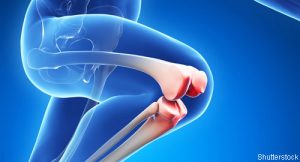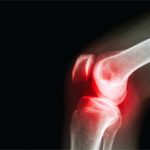 Promising Results from a Phase 3 Study
Promising Results from a Phase 3 Study
SAN DIEGO—An investigational liposomal formulation of dexamethasone sodium phosphate (TLC599) for intra-articular injection is being studied to treat patients with knee osteoarthritis (OA). George Spencer-Green, MD, MS, chief medical officer of Taiwan Liposome Company (TLC), Cambridge, Mass., presented recent data on this agent in a late-breaking abstract session at ACR Convergence 2023.1
Background: According to the U.S. Centers for Disease Control and Prevention, OA is a degenerative joint disease and the most common form of arthritis, affecting more than 32.5 million adults in the U.S.2 OA is a disease of the entire joint that can degrade cartilage, change bone shape and cause inflammation, leading to pain, stiffness and mobility loss. No cure currently exists.
OA is a manageable condition, with patients able to minimize pain, continue physical activities and maintain a good quality of life. Intra-articular corticosteroid injections are used to relieve pain, reduce inflammation and improve mobility. But the effects of these agents are not predictable, and the pain relief duration can be short. To date, the benefit of repeat corticosteroid injections has not been confirmed.
The study by Spencer-Green et al. sought to confirm prior study results that showed OA pain relief in patients treated with TLC599 over 24 weeks. This study also sought to evaluate the benefit of a repeat injection at week 24 over a year (NCT03005873).3
Methods
This three-arm, placebo- and active-controlled study evaluated the efficacy and safety of TLC599 as a single and repeated dose. A screening diary was used to enroll patients with K-L (Kellgren and Lawrence) grade 2–3 OA of the knee. The K-L system is used in research to classify OA severity. Grade 2 is minimal—definite osteophytes and possible joint space narrowing. Grade 3 is moderate—moderate, multiple osteophytes, definite joint space narrowing, some sclerosis and possible deformity of bone ends. Enrolled patients also had an average daily pain score from screening diary completion in the index knee of 5–9 (i.e., on a scale of 0–10, in which 0 is no pain and 10 is the worst pain).
The study’s efficacy parameters included average daily pain using mixed models for repeated measures (MMRM), Western Ontario and McMaster Universities OA (WOMAC) index and analysis of covariance (ANCOVA). The WOMAC pain score at week 12 was the study’s primary end point.
In the double-blinded study, 509 patients were randomized in a 2:1:1 ratio to receive a 12 mg injection of TLC599, a 4 mg injection of dexamethasone sodium phosphate or an injection of saline (placebo). At week 24, eligible patients in the TLC599 group and the placebo group received a second injection of the same treatment. Also at week 24, patients in the dexamethasone sodium phosphate group received a blinded injection of TLC599.
